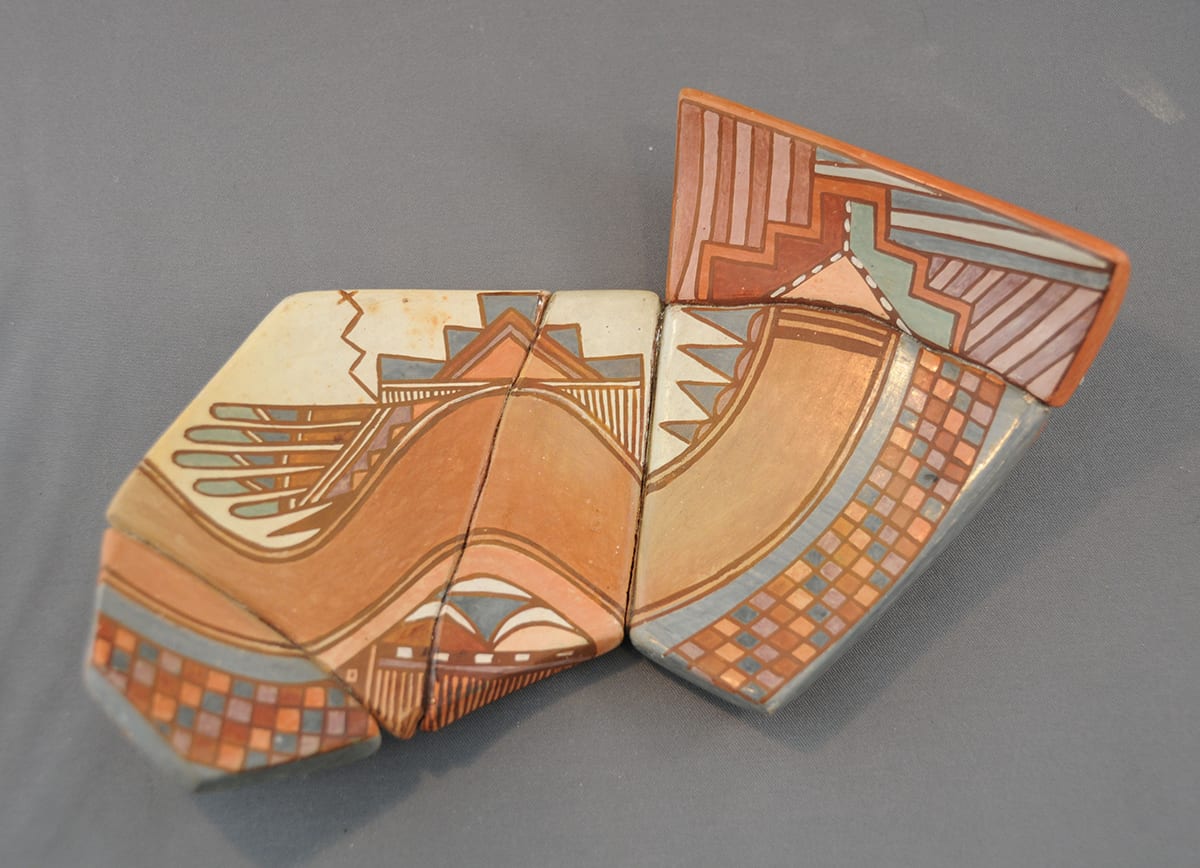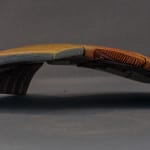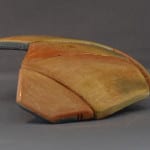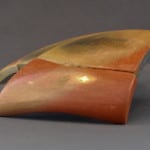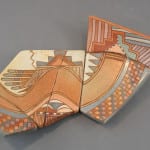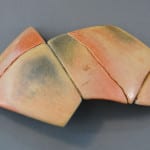Although “shard-pot” is probably the best way to describe 2013-10, the entire item as conceived by Nathan is here. This is not the remnant of a larger, broken piece.
Rick Dillingham (1952-1994) was a nationally recognized ceramicist, pueblo pottery dealer, author, and friend. (See his photograph with bowl 1993-04.) In the 1980s, Rick began making pots, breaking them and reassembling the pieces, partially in tribute to the ancient pottery of the Southwest. In his review of Nathan Begaye’s work, Garth Clark (2006:24) claims that Nathan told Clark that he and Rick met only once and the conversation did not go well. That might be true, but I am told by a friend who knew both men that the scenario described by Clark is unlikely and was probably due to Nathan’s love of humor, especially the telling of tall tales to Anglo art critics. Coyote lives.
I am inclined to agree with Ed Wade that Nathan’s use of reassembled shards was influenced by Rick’s earlier and better-known development of this technique. Both men were iconoclastic curmudgeons and both were gay ceramicists operating in the small world of Southwest art pottery, so pretty much any scenario might be true.
Whereas Rick made complete pots, smashed them and reassembled the jagged pieces, the junctions between the shards of 2013-10 are smooth and consistent. It seems that Nathan shaped pot 2013-10 from a concave plaque of clay, cut the edges to the straight-edged shape seen here, and then cut the trimmed form into five different-sized smooth-edged sections. Thus while Rick made pots, reduced them to shards and then reassembled them, Nathan has developed an alternative perspective. Always inventive, Nathan skipped the pot incarnation and made the shards directly.
The orange blushing of the bottom suggests the shards were made of Hopi clay and fired traditionally. The piece is scratch marked: “Nathan B/ Hopi-Navajo/6-14-00.” The date is about five years before Nathan mostly ended his pottery production and about 10 years before his death.
Nathan was such an inventive ceramicist that it would be misleading to define a particular style and claim that “this is his typical work.” Nevertheless, he pioneered the use of a range of vibrant colors on pueblo pottery and this curious assemblage is typical of that genre of his production. Unusually vivid, all the colors on 2013-10 are from natural clay slips. Only Jake Koopee, 12 years Nathan’s junior, used a similar range of color from natural clay pigments on Hopi vessels. (See 2013-08.) It is ironic that both men also died young and at the prime of their work.
A reddish-brown ribbon snakes across all five-shard sections of 2013-10, and ends in a light tan arrowhead. Polychromatic checks bounded by blue appear twice. Stepped cloud images appear on three of the five shards. If the piece is oriented so that the smallest shard is to the right, the next two shards share common design elements that are cut through by the junction between them. Five beautifully colored and delicate tail feathers grace one of the large shards. On four of the five shards, the design on the front carries over the edge of the piece, like a Dan Namingha painting. Although the decorative technique on 2013-10 is completely different than on his canteen 2013-09, both pots are decorated with standard Southwest pottery elements that are uniquely rendered and combined. Pot 2013-10 is arresting and intriguing; I assume this response would please Nathan.

